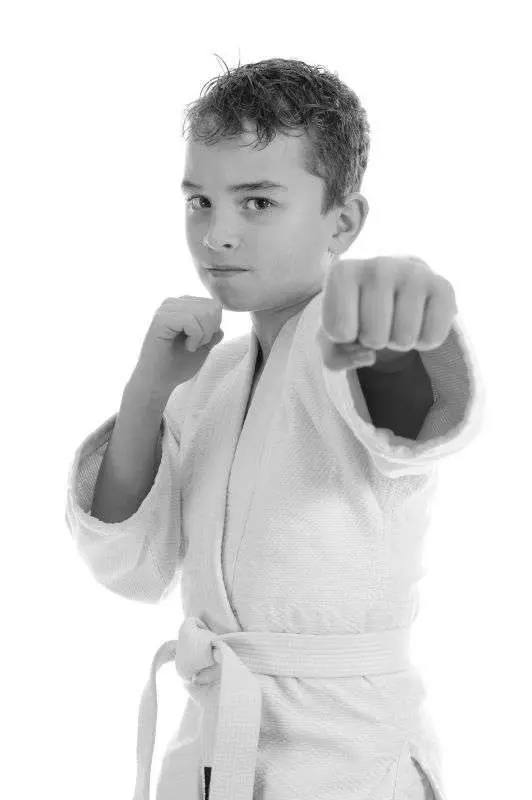When you turn on the TV or listen to the radio today, it is full of local and national headlines about violence. Because of this violence, more parents are seeking martial arts for children programs for self-defense for their kids and to help them develop life skills that will allow them to avoid conflict and feel safer in any situation as they grow.

In the schoolyard, bullies look for children who appear smaller in size, nervous, or suffer from low self-esteem. If your child does not feel they can keep up with their peers while playing team sports, they might thrive in martial arts classes. Why! Because martial arts develop independence, coordination, self-confidence, and mental fortitude in each participant.
Here are some key factors to look for when deciding which martial art school/style and an instructor are right for your child. First, it is important to visit the studio/dojo when the class your child will take is in session. This will give you an indicator of how the instructor interacts with the students, is he/she praising first before correcting?
Is the dojo clean, clutter-free, and with ample space for training? Are you able to see and hear how the instructor interacts with your child? Has the instructor(s) been Live Scan? The Live Scan will provide results to parents who have no criminal records with the State Department of Justice and the Federal Bureau of Investigation.
In addition, is the instructor teaching the children to be aggressive? Schools today have a zero-tolerance policy, it is important your child learns the skills to de-escalate a situation before they use their karate. At the James Martial Arts Academy located in San Diego, California, we teach our students only to use their karate to:
- Protect their family,
- Protect their friends (parents will define who the friends are) and
- Protect themselves.
We instill in our students the importance of self-control and discipline. Our students are confident enough in their martial arts empowering they can walk away from any heated situation which demonstrates the purity of martial arts (the fight without fighting), but if forced they can defend themselves with the correct amount of force.
In addition, this reinforces the mental toughness that karate provides, which will carry them through all life situations. Even, one of the premier parenting publications, “Parenting.com,” agrees that martial arts training is beneficial to children. If you have any questions or need help finding a martial arts studio in San Diego or El Cajon, California, please contact us using our contact form. We would love to help you and your child.
[Most moms and dads can understand that roughhousing allows children to develop physically] by providing a means of vigorous exercise, however, if the truth is told, that is the least substantive effect that it has on them. In roughhousing, the less observable benefits will have the longest-lasting returns.
Believe it or not, these sorts of outwardly aggressive activities serve to enhance the participants’ capacity for social awareness. When children engage in rough play with one another they learn to abide by a set of predetermined unspoken rules. For instance, if one child begins to cry, the other stops and checks if she or he is alright. After this, they typically go back to resuming the same activity that they did before.
For instance, if one child begins to cry, the other stops and checks if she or he is alright. After this, they typically go back to resuming the same activity that they did before.
This is evidence that the underlying social benefits of roughhousing are broad. In order for a child to have the presence of mind to stop the activity, he must be aware of his partner’s feelings and present an appropriate response. They process an incredible amount of information in regards to their partner’s facial cues and body language to figure out the appropriate level of aggressiveness. This empathy is in the interest of both participants simply because if one side gets seriously injured then the play can not proceed and both lose out on the fun.
They process an incredible amount of information in regards to their partner’s facial cues and body language to figure out the appropriate level of aggressiveness. This empathy is in the interest of both participants simply because if one side gets seriously injured then the play can not proceed and both lose out on the fun.

Occasionally anger will arise from one of the children involved. It is crucial to keep in mind that anger is not the outcome of being physically hurt but instead it emerges from the feeling of being actually slighted by their opponent. The moment a child is thrown down to the ground by his partner he is most likely to become upset (and therefore physically retaliate) if they think that their partner had malicious intent. Alternatively, if they are thrown down and get injured but realize that it was an accident they don’t become angry. In this way, each one of the parties gets an understanding that emotions and
Alternatively, if they are thrown down and get injured but realize that it was an accident they don’t become angry. In this way, each one of the parties gets an understanding that emotions and physical discomfort may have little correlation and that accidents do take place.
The more that kids encounter this distinction the greater they become at reading their partners’ motives. Whenever compared to their non-rough peers, children that have been roughhousing because they could walk are much more likely to be able to identify malice from an accident and are therefore able to react properly. This
In closing, this beneficial lesson lasts past childhood and can have incredible social consequences that can continue into adult life.

